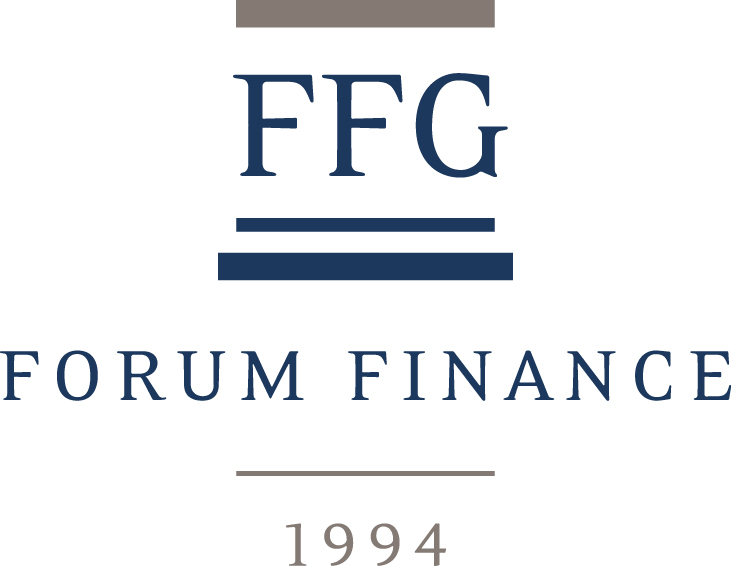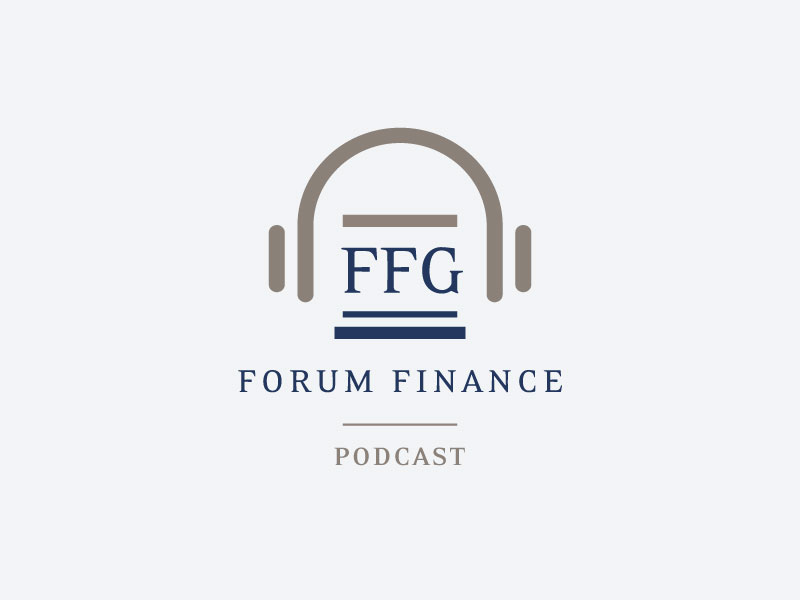Newsletter | February 2025
6 February 2025Financial News,Newsletter
As largely expected, the ECB cut rates by 25 basis points in January
+8.4% PERFORMANCE OF THE SWISS EQUITY INDEX
Investment perspective
The start of President Trump's second term was undoubtedly at the forefront of investors' minds, particularly his stance and actions on tariffs. The uncertainty did not prevent financial markets from posting significant gains in January, both in equity and credit markets, led by high yield. Bond yields rose to their highest level since May 2024 following the release of the employment data. Investors were again concerned that the strong US economy would eventually translate into inflationary pressures, leading to an upward revision of inflation expectations. As a result, the 10-year breakeven rate, a measure of expected future inflation, has risen from a low of 2.0% in early September last year to 2.4% at the end of January. As widely expected, the Fed kept rates on hold. For the rest of the year, the market is now pricing in only one rate cut in 2025, significantly less than a few months ago. In contrast, the European Central Bank (ECB) cut rates for the fifth time, paving the way for further cuts in 2025. Finally, the Bank of Japan (BoJ) raised its key interest rate to 0.5%, the highest level in 17 years. For many investors, the surprise at the start of the year was undoubtedly the performance of European equities, which had lagged badly until early December due to the region's sluggish growth momentum and trade tensions. As a result, the main European equity index rose by 6.5%, while the Swiss equity market stood out with a gain of 8.5% in the first month of the year. The US market closed broadly higher, but there was a lot of excitement after DeepSeek unveiled a new version of its large language model, reportedly developed at a fraction of the cost of the leading US models, which appears to be much more economical to run. The US dollar fluctuated on the new administration's tariff announcements but ended the month flat against the euro and Swiss franc. Gold and silver posted strong gains and remain close to all-time highs as Trump's trade tariffs continue to fuel fears of a global trade war and its impact on US inflation, supporting the safe-haven price of gold.
Investment strategy
As we feared following Donald Trump's re-election to the US presidency, since he was sworn in for this second term, there has been a flood of executive orders. Although he initially appeared to have temporarily abandoned tariffs, we were reminded of his campaign promises in this area at the end of January. The announcement of tariffs of 25% on products imported from Mexico and Canada and 10% on those from China (effective 4 February) was immediately followed by retaliation, leading to a temporary suspension until early March. Announcements of possible measures against the European Union are also expected. According to Goldman Sachs, a 1 percentage point increase in the effective tariff rate raises the core PCE price level by 0.1%, implying a one-off boost to core PCE inflation of 0.5% y/y. If the tariffs on Canadian and Mexican imports are implemented as announced, we should see inflation that could exceed 3.0%. The consequences of a reacceleration in inflation could mean a premature end to US rate cuts and a major turning point for markets, especially at current valuations. Against this backdrop, we have taken a more cautious approach to our asset allocation. Although we have reduced our equity allocation, we are maintaining our preference for corporate bonds and favouring European government bonds to take advantage of monetary policy divergences.
Trump Announced Tariffs of 25% on Imports from Mexico and Canada, and 10% on Chinese Imports
Portfolio Activity/ News
Our positioning at the beginning of the year was very clearly risk-on, with a broad allocation to equity markets and high yield bonds. We have recently reduced our equity allocation but maintained our credit stance and added long-dated eurozone government bonds. Our expectation of an acceleration in the central bank's accommodative monetary policy confirms our belief in the potential for added value in this segment. On the other hand, we remain much more cautious on US yields, which are still likely to rise due to uncertainties on the inflation front. Having benefited greatly from our strong allocation to US equities, we began to move back into European equity markets in January, including Switzerland for clients thinking in these currencies. This move proved very profitable in January, given the excellent performance of these markets. In a scenario of lower European interest rates, we look at interest rate-sensitive assets such as the MDAX (the 50 largest companies after the DAX). Indeed, the pro-business policies proposed by the CDU, currently leading in the polls, would stimulate investment and could mark a turning point for Europe. Within US equities, we took profits on our Value Exposure, maintained a market-consistent weighting in technology and increased our exposure to small and mid-caps, which should benefit fully from the Republicans' pro-budget policies. We took advantage of the sharp fluctuations in the US dollar during the month to significantly reduce our position. Following these changes, we are still slightly overweight in US dollars. We reduced our exposure to Global Macro before exiting the segment altogether to build up a liquidity cushion that could prove useful in the event of excessive volatility.
Download the Newsletter
Outlook | 1H 2025
18 December 2024Financial News,Investment perspectives
Executive summary
The new US administration will be more inward-looking, with an overall pro-growth agenda that includes tax cuts and deregulation. It has also significantly reduced fears of an imminent recession. However, these measures, combined with higher tariffs and more restrictive immigration policies, will add to inflationary pressures, and could force the Fed to slow or even question its rate-cutting cycle.
The combination of robust growth, loose financial conditions and healthy corporate balance sheets means that we remain optimistic about the credit segment. We favour high yield (HY) across all regions due to the attractiveness of the all-in yield. We are more cautious on investment grade (IG), not only because of extremely tight spreads, but also because of greater interest rate sensitivity.
Despite rising policy risks, the overall environment remains supportive for equities. With earnings growth expected to reach 15% in 2025, the US market should retain its structural advantage over other developed markets, but these ambitious estimates will be difficult to achieve and could lead to negative surprises, particularly for technology mega-caps.
Economic Outlook
US election resolution brings clarity to markets
Global growth remains resilient in 2025, in line with 2024 estimates
Growth divergence among developed economies widens
Global developed market policy rates normalizing
Fed rate cuts to be more measured
Inflation tilted to the upside, especially in the US under Trump 2.0
Key Risks
Fed forced to raise rates by one-off and persistent inflation shocks
Economic slowdown without fall in inflation leads to rise in term premiums
Ineffective policies lead to Japanification of Chinese economy
Japanese real interest rates on the rise
Investment Convictions
Eurozone growth headwinds give European Central Bank (ECB) room to cut rates
US yield curves could rise in 2025, adding duration if 10Y yield rises to around 5.0%
EM corporate spreads attractive, but volatility expected as trade tariffs unfold
Supportive policy should continue to underpin US Small and Mid-Caps
Interest-rate differentials remain as catalyst for flows into dollar-denominated assets
Table of contents
- OUTLOOK H1 2025 : EXECUTIVE SUMMARY
- 2024 REVIEW : KEY HIGHLIGHTS
- OUTLOOK 2025
- INVESTMENT CONVICTIONS
- ASSET CLASS VIEWS
Download the Outlook 2025
Newsletter | November 2024
1 November 2024Financial News,Newsletter
Euro area headline inflation below ECB’s target in September
-5.2% PERFORMANCE OF THE US LONG TREASURY INDEX
Investment perspective
After a month in which all eyes were on central banks, October focused on the future of economic growth, particularly in the US, before early November gives way to the great circus that is the US election. On the growth front, the IMF's latest publication raised its forecast for US economic growth to 2.7% in 2024, up 0.6 percentage points from its January forecast. The move underlines how the US is outperforming other developed economies. The strong performance of the US economy mainly reflects robust productivity gains and employment growth. Labour productivity in Europe is lower than in the US. A lack of investment, especially in technology, has led to a growing divergence in income per capital on both sides of the Atlantic. Former European Central Bank (ECB) President Mario Draghi, in a report commissioned by the European Union (EU), proposed increased investment, financial market reforms and greater regional integration to boost productivity in response to accelerating competition from leading companies in the United States and China. The removal, albeit partial, of uncertainty about the future and pace of monetary policy normalisation has temporarily pushed inflation into the background. This is a very temporary situation, as the return of a possible Republican victory in the upcoming US presidential election is causing renewed concern in the interest rate market, not least because of the fiscal slippage and tariff increases advocated in the Republican platform. Treasuries have sold off sharply, with the yield on the 10-year Treasury rising 60 basis points, reflecting both stronger-than-expected economic growth and more inflationary policies in the event of a Republican victory. The proximity and closeness of the US election has pushed volatility higher. Implied volatility in the US Treasury market has risen by almost 40% since the end of September. The rise in bond yields, and in particular the expected yield differential between the US and other countries, has led to a strengthening of the dollar against almost all developed and emerging market currencies.
Investment strategy
Following the interest rate cuts by the major central banks in the developed world, except for Japan, the path towards a "soft landing" scenario has become the most likely. In terms of seasonality, we're entering the most productive part of the year for the US equity market. Since 1945, the months of October, November, and December have averaged gains of 1.04%, 1.56%, and 1.58%, respectively. However, it is interesting to note that the month of October, in a presidential election year, saw a decline of 0.46% without affecting the behaviour of November and December. At the end of October, the US index was down 0.9%, broadly in line with historical performance. At the time of writing, the forecast remains a perfect toss-up. Christophe Barraud, ranked by Bloomberg as the best economic forecaster of the US economy over the past 11 years, predicts a Trump victory in the upcoming election. If Trump wins and Congress is divided, much of the domestic agenda would be stalled, which could lead Trump to retreat into tariff wars that could slow the US economy and hinder global growth. We continue to believe that economic data, particularly in the US, remains supportive, e.g. labour market, consumer confidence, monetary support and earnings growth will continue to underpin US equities, but we recognise that inflationary policies will put pressure on long-term interest rates.
Regardless of Who Takes over the White House, Economy will Likely Continue to Move Along
Portfolio Activity/ News
The swing in the polls towards a Trump victory on 5 November has dictated a more cautious approach to US interest rates. Indeed, rising government deficits and tariffs are likely to push up long-term interest rates. As we have seen in recent weeks, we could therefore see a bear-steepening (lower short-term rates and higher long-term rates). We have reduced long-dated US Treasury positions in favour of medium-dated US bonds with maturities of 3 to 5 years. We maintained our long euro zone bonds as the fundamentals continue to point to a general downturn. In Switzerland, we had already fully exited our government bond exposure in favour of real estate investments. The macro context remains supportive for equities, even if we could see volatility increase in this earnings season and just a few days before the US elections. We would take advantage of any excess weakness to buy the dip. It looks increasingly likely that Europe could be the victim of a second Republican term. We first downgraded our European equity rating to neutral in September on the back of political uncertainty. To reflect recent dynamics, we are now downgrading European equities to negative despite attractive valuations. In mid-October we also reduced our positions in European small and mid-caps. On the currency front, we have taken advantage of the dollar's weakness to add to our positions across all our currency bases. Since the end of September, the US dollar has gained 2.8% against the euro. We remain positive on the US dollar in the short term. Against a backdrop of high divergence and volatility, we remain convinced of the benefits of liquid alternative strategies such as global macro, alternative trend and even long/short strategies, whether in equities or credit.
Download the Newsletter
Newsletter | October 2024
3 October 2024Financial News,Newsletter
European Central Bank cuts rate, again while the Federal Reserve cut by half a point
+23.1% PERFORMANCE OF THE CHINA A ONSHORE SHARES
Investment perspective
September marked a milestone for the central bank after more than two years of fighting inflation, with the Federal Open Market Committee (FOMC) announcing a 50bp cut and hinting that more cuts were on the way. In the latest 'dot plot' of officials' projections, most expect the federal funds rate to fall to 4.25%-4.5% by the end of 2024, implying another half-point cut. Policymakers also expect the funds rate to fall a further percentage point in 2025, ending the year between 3.25% and 3.5%. In Europe, both the European Central Bank and the Swiss National Bank cut interest rates in September, the former for the second time by 25 basis points and the latter for the third time, as inflation slowed and concerns about the eurozone economy resurfaced. The increased visibility provided by these clarifications allowed short rates (the front end of the curve) to fall sharply in the second half of September. This monetary easing is taking place against a backdrop in which the inflation battle of recent quarters appears to be on the winning side, as confirmed by the latest inflation figures, particularly in Europe, where headline inflation is already approaching the European Central Bank's 2% target. These cyclical dynamics reinforce the soft landing thesis and enabled both bond and equity markets to post positive performances in September. This optimism also pushed many sentiment indicators into the green, providing further support for risky assets. In equities, the prize went to Chinese equities, which benefited greatly from government measures to support the economy. Indeed, the various categories of Chinese equities rose by more than 23% in a matter of days. The start of the monetary easing cycle in the US weighed heavily on the US currency. As measured by the dollar index, the US currency fell for the third month in a row, for a cumulative decline of 4.8% over the third quarter. Among commodities, the divergent performance of gold, up 5.7%, and oil, down 7.3% over the month, was notable.
Investment strategy
Since the beginning of the year, seasonal effects have produced some surprises. April, usually a positive month for equities, was down sharply this year, while September, feared by many, turned out to be a very positive month. If history repeats itself, we should have a positive fourth quarter for equities, including October which, contrary to popular belief, remains a buoyant month. As central banks clarify their policy normalisation, which the market has already partially priced in, risk appetite remains favourable, reinforcing our constructive stance, particularly on equities. It is crucial to recognise that market leadership will continue to evolve, as we have seen on several occasions this year, albeit without much repetition, at least so far. On the bond side, we continue to rotate into duration at the expense of credit. We are differentiating our stance more clearly by region, with a broad preference for European duration and a more cautious stance on US duration. Notwithstanding the recent announcements in China, which we naturally welcome, we are increasing our weighting in emerging markets due to their favourable economic and monetary dynamics. In terms of the currency mix of our portfolios, we are taking advantage of the recent weakening of the US dollar to increase our US currency exposure in Swiss franc and euro accounts.
Given Current Disinflationary Environment, the FOMC’s Half-Point Cut is an Appropriate Recalibration
Portfolio Activity/ News
Following the FOMC announcement, we decided to reduce our credit exposure and hence our bond exposure, while maintaining a high interest rate sensitivity, except for Swiss duration, where the potential is limited. It is worth noting that the rotation of bonds this year towards greater interest rate sensitivity (duration) made a positive contribution to performance, as did our exposure to credit and emerging market debt. Having increased our bond allocation as opportunities arose in the cycle, it is now time to reduce it, particularly high yield, in favour of equities. The proceeds allowed us to increase our allocation to emerging markets through an actively managed global emerging markets equity fund with a distinctive and unique approach. Apart from emerging markets, we increased our exposure to US equities and, to a lesser extent, European equities. We have generally used passive instruments for quick and efficient execution. For dollar accounts, our tactical view on the dollar is to favour an approach based on hedging non-dollar currency exposures. For our Swiss franc accounts, where we have aggressively reduced the non-Swiss franc weighting - a good decision given the appreciation of the franc - we believe it is appropriate to increase our investments not only in emerging markets but also in US and European equities. We have also increased our exposure to the US dollar by converting a portion of our alternative investments, previously hedged against currency risk, into a US dollar tranche.
Download the Newsletter
Newsletter | September 2024
4 September 2024Financial News,Newsletter
The Federal Reserve (Fed) is ready to cut interest rates… and SOON!
-2.3% THE PERFORMANCE OF THE DOLLAR INDEX
Investment perspective
The beginning of the month was marked by a sharp sell-off triggered by weaker than expected non-farm payrolls and a rise in the unemployment rate for July, which raised concerns about US growth, and then the Bank of Japan's decision to raise interest rates for the second time this year. Markets reacted quickly. In the first few days of August, global equity markets plunged and bond spreads widened sharply. In the space of a few days, the main US index fell by more than 6%, while the Magnificent Seven fell by almost 10%. The initial sell-off was exacerbated by the unwinding of carry positions on the yen, triggered by the divergence in monetary policy expectations between the Bank of Japan, which is in rate hike mode, and the Federal Reserve, which is expected to begin its monetary easing cycle at its September meeting. These growing uncertainties led to a spike in volatility, with the VIX peaking above 65 in early August, one of the highest level on record. However, as markets gained confidence in the resilience of the economy, strengthening the case for a soft landing, the VIX fell back to levels around 15. Fortunately, the stress was short-lived and the recovery was swift, with the global index closing the month up 1.9% in local currency terms. The latest consumer price index (CPI) readings in Europe and the United States were down, well within the central banks' target ranges and clearly decelerating. This would further increase the likelihood of interest rate cuts. Credit spreads widened in sympathy before closing the month on a tighter note, while the yield curve steepened, with the 2-year benefiting the most from the increased likelihood of rate cuts. In this context, all fixed income segments posted positive returns over the month, with emerging market debt the best performer, followed by global high yield. The optimism surrounding the US rate cut claimed its first victim: the US dollar, which fell sharply against the major currencies (-2.5% against the euro) and even erased all its year-to-date gains against the Swiss franc. Finally, gold prices remained buoyant (+2.3%), while oil prices continued to fall, with WTI down 5.6% following a 4.5% fall in the previous month.
Investment strategy
After the market jitters of early August, which forced many players to rethink their stance and significantly reduce their leverage, the spotlight is back on the central banks. The Fed is likely to begin its monetary easing cycle in September. The market has priced in an aggressive bearish campaign, as it did at the start of the year. Those expectations were overly optimistic and forced the market to reassess the timing and magnitude of rate cuts. This time, however, the conditions for a rate cut appear to be more favourable, thanks to the slowdown in consumer price inflation brought about by a softer labour market. The upcoming labour market data will be crucial as it will determine the pace of rate cuts. The Fed is likely to cut rates by 25 basis points in September and the SNB is likely to follow suit. Although sentiment and momentum indicators briefly gave buying signals, especially for US equities, we decided to leave our exposure virtually unchanged. The rapid rebound in the markets quickly brought us back to a more neutral zone. We are clearly at a crossroads, especially as we enter a seasonally difficult period, but for the time being we remain constructive on both developed and emerging market credit and equities. August reminded us how heterogeneous alternative strategies can be, even within a single category such as trend strategies (CTAs). We reiterate our commitment to alternative trend strategies, which proved resilient in the sell-off as they are less exposed to crowding effects.
The ECB Minutes Indicate That, in July, Members Had an “Open Mind” About Further Rate Cuts
Portfolio Activity/ News
After a few days of intense stress, markets calmed down and ended the month on a very positive note across all asset classes, except for some global macro and trend strategies. During the month, we took advantage of price differentials to slightly reduce our exposure to emerging market debt, which reduced the negative impact of the weakness of the US dollar against the Swiss franc and the euro. In fixed income, we have maintained a high interest rate sensitivity, not only to benefit from falling inflation, but also to provide a cushion in the event of a more pronounced economic slowdown. This position was built up gradually and played its full role during the tensions of early August. After a brief spike, credit spreads returned to their end-July levels, giving us the highest return in the bond segment over the month. We continue to have confidence in corporate bonds across the board, from investment grade to high yield, in both developed and emerging markets. The increase in volatility provided us with a good opportunity to rebalance our allocations. Against this backdrop, we are maintaining our preference for European equities over US equities, especially after the turmoil caused by the political posturing in France. Having been cautious on emerging markets, the prospect of an interest rate cut in the US encourages us to be more constructive on these markets. As a result, we have finally exited China as a dedicated allocation in favour of an increased weighting in global emerging markets. The most significant change in our allocation has been the increase in the weighting of alternative strategies, in particular global macro strategies, where we have almost doubled the weighting.
Download the Newsletter
Newsletter | August 2024
8 August 2024Financial News,Newsletter
European Central Bank (ECB) left its benchmark interest rates unchanged
10.2% THE PERFORMANCE OF THE RUSSELL 2000
Investment perspective
July was a turbulent month, particularly in the second half, but marks a turning point in the relative performance of small and large caps. US indices ended the month in positive territory, with small caps posting a stellar 10.2% return, in contrast to the tech-heavy indices, which fell during the month. Global economic growth slowed slightly in July. At its current level (52.5 in July versus 52.9 in June), the global PMI is consistent with the global economy growing at an annualised rate of 2.8%, compared with an average growth rate of 3.1% in the pre-pandemic decade. In the US, inflation fell below 3% and was well below expectations, while the core personal consumption expenditure price index rose by a seasonally adjusted 0.1% in the month and was 2.6% higher than a year earlier. The US labour market continued to weaken, with the unemployment rate rising to 4.3%, although the labour force participation rate rose and job growth remained relatively stable. New and existing home sales fell in July, while median sales prices for existing homes reached another all-time high. The continuation of this disinflationary trend supported market expectations that the Fed would finally begin to ease policy at its September meeting. This welcome news on the inflation front helped US Treasury yields to fall sharply, with the middle of the curve posting the largest month-on-month declines. The bond indices all posted positive returns, with the long-dated government segments posting the best results thanks to the easing in the interest rate component of the bond markets. The US long-dated Treasury index gained 3.6%, its best month since the beginning of the year. After a difficult June, the European market performed in line with the US indices in July. However, dispersion was high across regions. The Swiss market (+2.7% in local currency) and the UK market (+2.5% in local currency) performed very well, while the Eurozone index continued to lag, rising 0.4% in local currency over the month. The performance of commodities was mixed. Gold rose by 5.2% while crude oil (WTI) fell by 4.5%.
Investment strategy
The market has become more confident that interest rates will fall soon, with the probability of a Federal Reserve rate cut in September rising from 72% to 92%. The acceleration in rate cuts should also be seen in the context of the target level of the interest rate at the end of the easing cycle, the so-called terminal rate. Here, too, expectations have fluctuated widely. After a trend of steady upward revisions since January, reaching a high of over 4.9% at the end of May, short-term interest rate expectations for January 2025 have fallen back to the level expected at the beginning of the year, i.e. an implied interest rate of 3.8%. This downward shift in expectations has been massive and contrasts with the consensus view of just a few weeks ago. This trend was exacerbated by the panic in global equity markets at the beginning of August. Are we witnessing a major shift in US economic expectations that, if confirmed in forthcoming data, will force the Federal Reserve to cut interest rates not in line with falling inflation, but as a matter of urgency to save the economy? Although we might have feared an increase in the risk of the slowdown scenario reappearing as likely, the macro data remain constructive overall, but the risk of exaggeration and reversal remains as high as ever.
Powell Suggested a Rate Cut Could Come in September, the Fed’s Next Meeting
Portfolio Activity/ News
The dramatic risk-off moves in recent days, such as the fall in global equity markets and digital assets (e.g. cryptos), remind us of the importance of a balanced position in our portfolios at this stage of the cycle. In fixed income, we have increased our exposure to government bonds to take advantage of the more accommodative monetary policy, but also as a hedge against a more pronounced economic slowdown. We are currently evaluating whether to continue the rebalancing of our bond portfolio, but we expect to be in a better position to do so in the coming months. In equities, we gradually became more cautious during the second quarter, reducing our equity allocation and favouring more defensive strategies such as long/short. We had no positions in Japanese equities and, until recently, were cautious on emerging markets. Our more diversified positioning should allow us to ride out this turbulent period with greater composure and take advantage of any opportunities that may arise in the event of an exaggeration. We are maintaining our current allocation as long as the technical levels of the uptrend remain intact. However, we are aware that the market's momentum has slowed and this alone could justify a continuation of the adjustments we have made in recent months. If such a reversal were to occur, we would initially reduce our equity exposure and reduce our credit exposure in developed and emerging markets in favour of medium- and long-term government bonds.
Download the Newsletter




